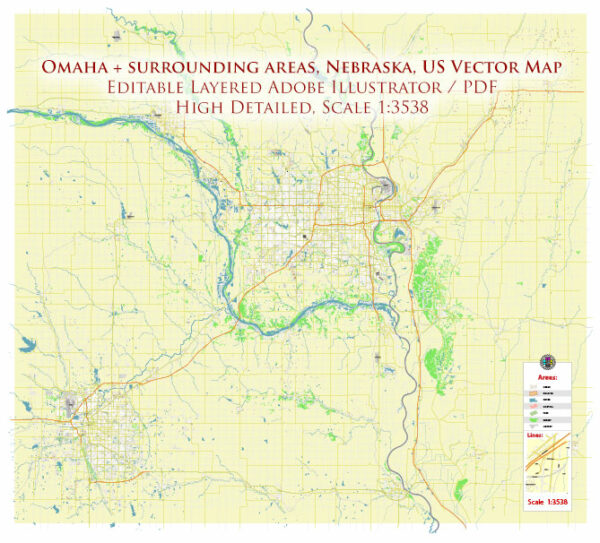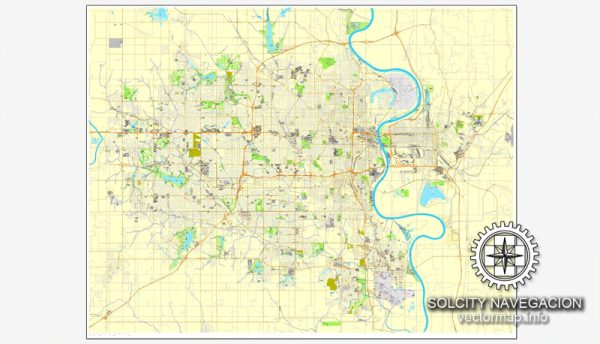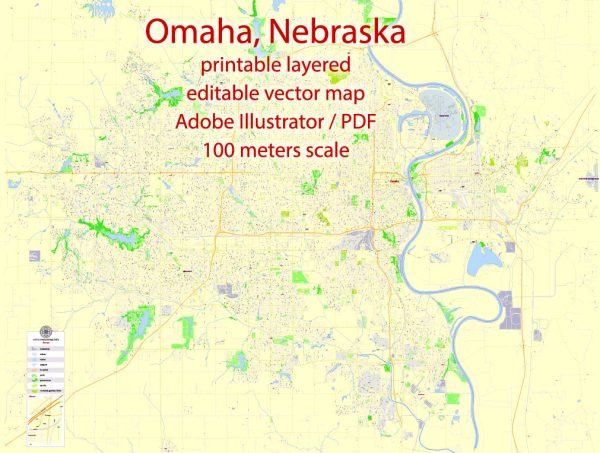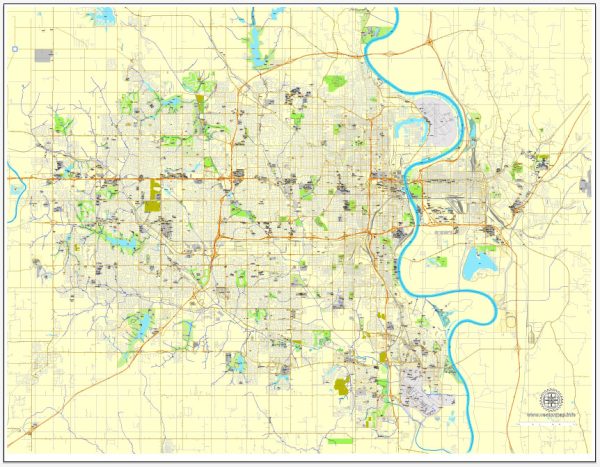Omaha, Nebraska, in the United States, has a diverse architectural landscape that reflects its history, culture, and economic development. Here is a brief description of the city’s architecture:
- Historic Architecture: Omaha boasts a range of historic architectural styles, with many well-preserved buildings from the late 19th and early 20th centuries. Some of these styles include:
- Victorian: You can find examples of Victorian architecture in historic neighborhoods like the Old Market, with ornate details and decorative facades.
- Italianate: Italianate-style buildings are characterized by their tall, narrow proportions and decorative cornices.
- Beaux-Arts: This style is marked by grand, classical designs, and several Beaux-Arts buildings can be seen in the downtown area.
- Art Deco: Omaha has a number of Art Deco buildings, with their distinctive geometric shapes, bold colors, and intricate detailing. The former First National Bank Building and the Douglas County Courthouse are notable examples of this style.
- Mid-Century Modern: The mid-20th century brought the rise of mid-century modern architecture in Omaha, characterized by clean lines, large windows, and a focus on function and minimalism. Some residential neighborhoods feature mid-century modern homes.
- Modern and Contemporary: As the city has grown, it has seen the construction of modern and contemporary buildings, especially in the downtown area. The new Riverfront and Capitol District developments feature sleek, glass-and-steel structures.
- Historic Districts: Omaha’s Old Market is a prime example of a well-preserved historic district, with cobblestone streets and a mix of architectural styles, housing a variety of restaurants, shops, and art galleries. Dundee, another historic neighborhood, is known for its charming early 20th-century homes.
- Educational Institutions: The city is home to several educational institutions with unique architectural designs. The University of Nebraska Medical Center has modern medical facilities, while Creighton University has a mix of historic and contemporary buildings on its campus.
- Cultural and Religious Buildings: Omaha features various churches, synagogues, and cultural institutions, each with its own architectural style. Examples include St. Cecilia’s Cathedral, known for its Gothic Revival design, and the Joslyn Art Museum, which combines modern and classical elements.
- Parks and Landscapes: Omaha’s architecture extends beyond buildings to include well-planned parks and green spaces. The city has numerous public parks and scenic riverfront areas that offer a mix of natural beauty and architectural elements like bridges and public art installations.
Omaha’s architectural diversity reflects its rich history and dynamic growth. Whether you’re interested in historic preservation or contemporary urban development, the city offers a wide range of architectural experiences to explore and enjoy.





 Author: Kirill Shrayber, Ph.D.
Author: Kirill Shrayber, Ph.D.